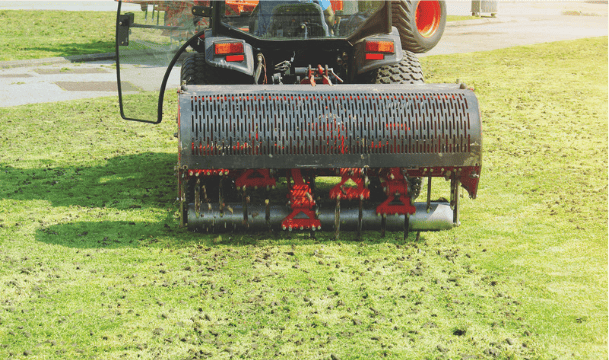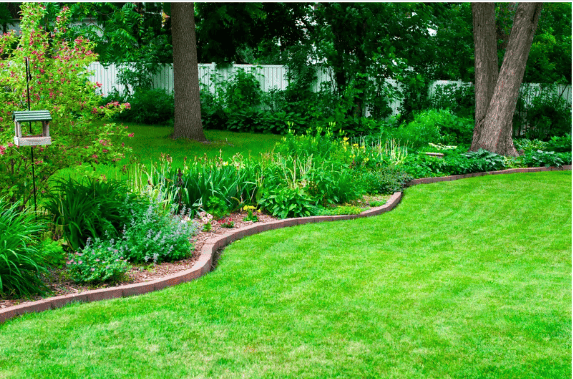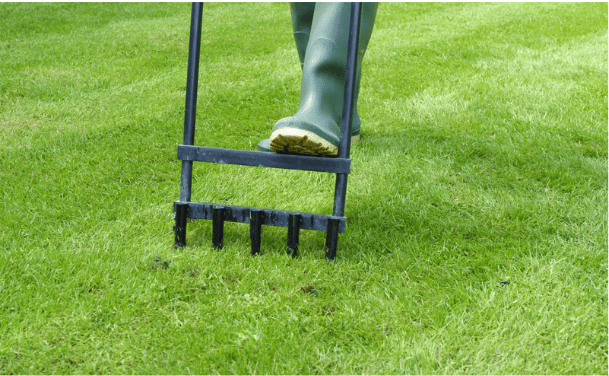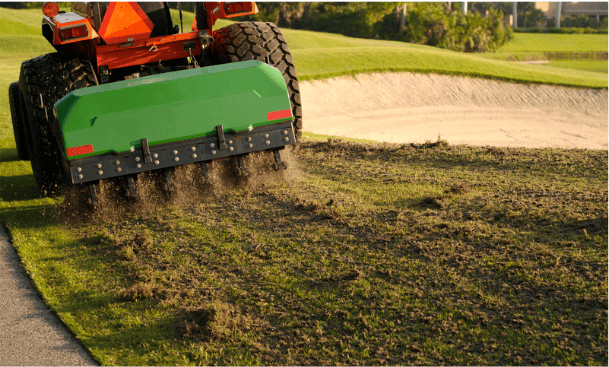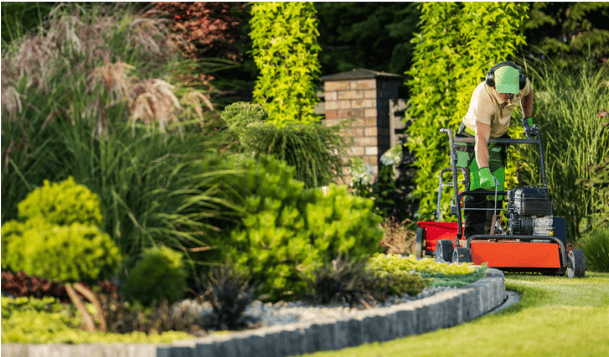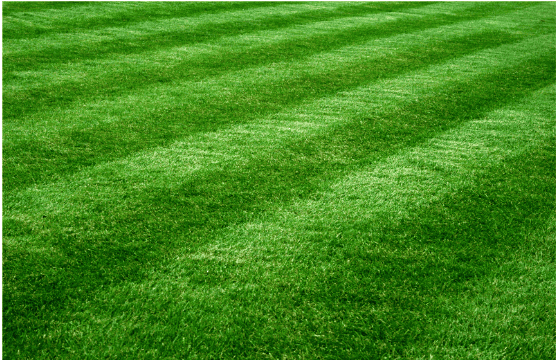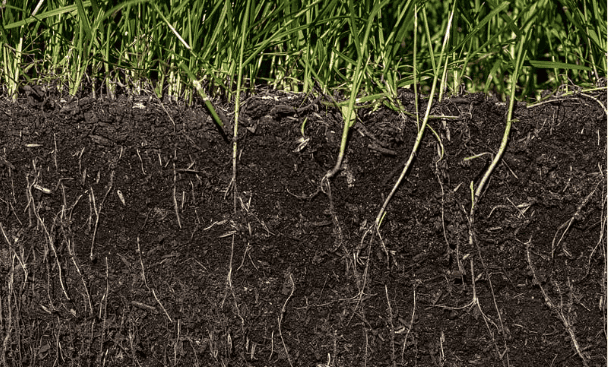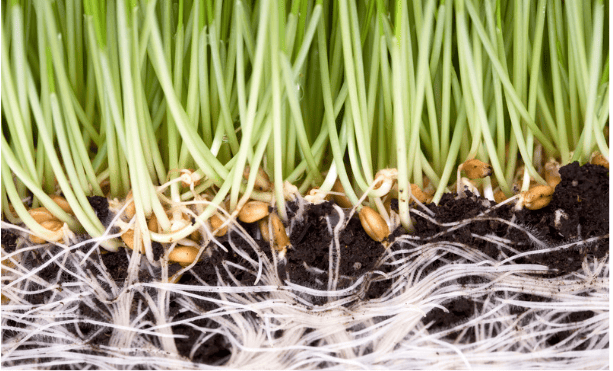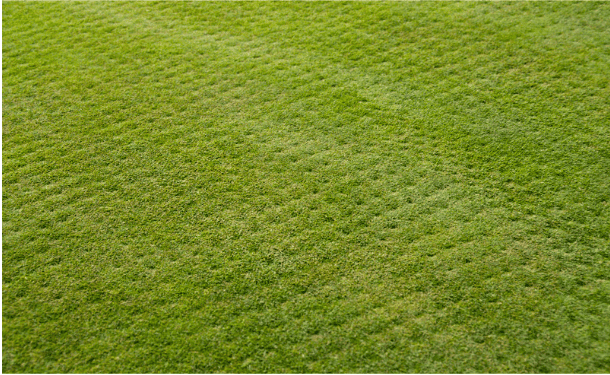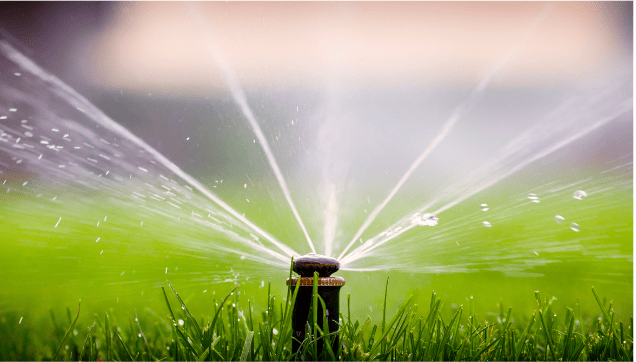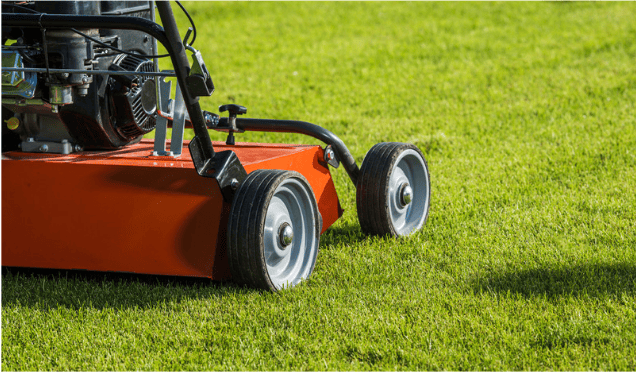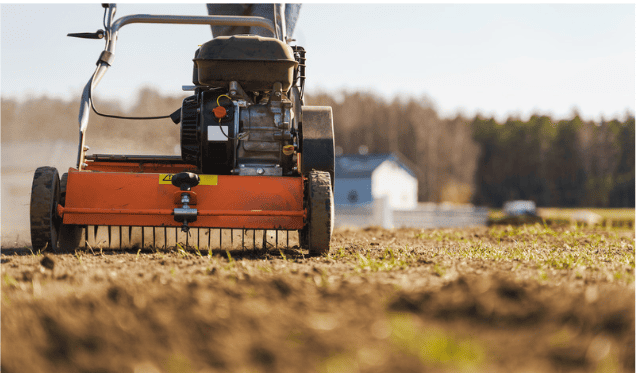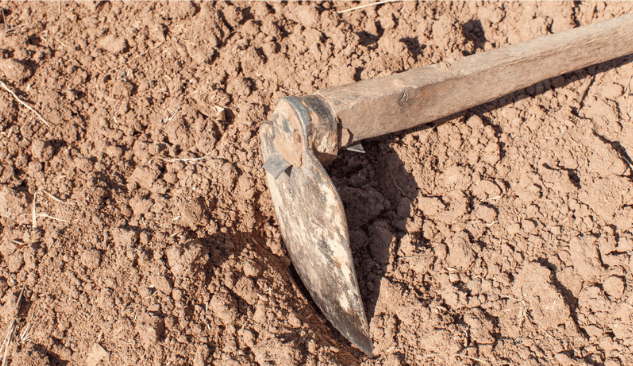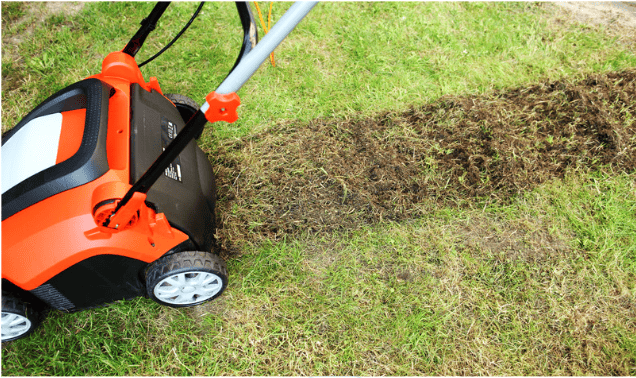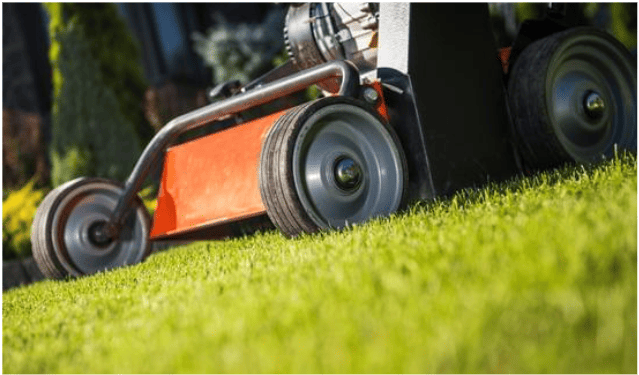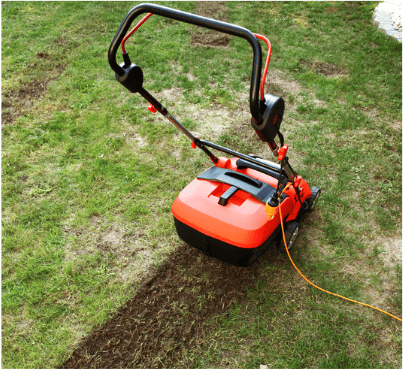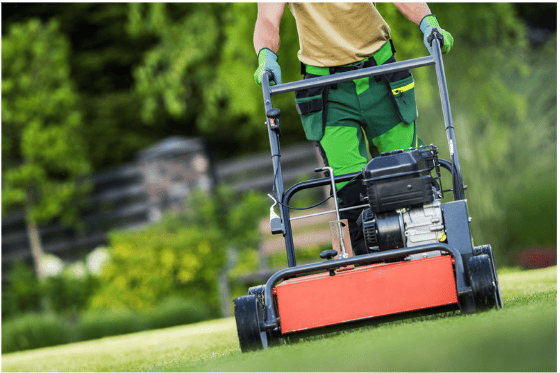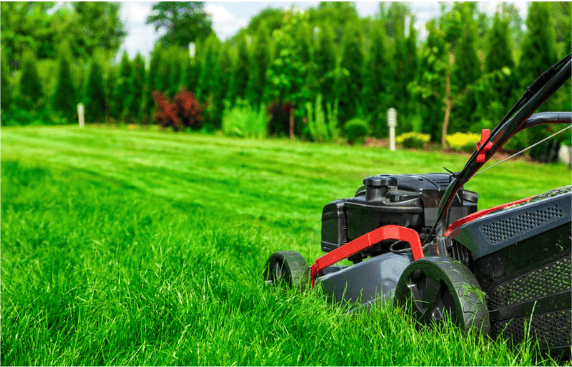The Benefits of Aerating Your Lawn and How to Do It
Introduction
A well-maintained lawn is a source of pride for many homeowners. While regular mowing, watering, and fertilizing are essential, one crucial practice often overlooked is lawn service. Aerating your lawn involves creating small holes in the soil to alleviate compaction and improve the movement of air, water, and nutrients to the grassroots. This article delves into the benefits of aerating your lawn, the different methods available, and a step-by-step guide on how to do it effectively, using key concepts such as compacted soil, grassroots, and soil surface.
Aerating lawns are crucial for maintaining the health and vigor of both cool-season and warm-season grasses. For cool-season grasses, the best time to aerate is in early spring or early fall, while warm-season grasses benefit most from aeration in late spring or early summer. The process involves using various tools, such as a manual aerator, spike aerator, or plug aerator, to create small holes in the soil’s surface. These tools can be rented from lawn and garden stores or through a lawn service.
Using a spading fork or manual aerator is suitable for smaller areas, while larger lawns may require a power rake or core aerator with hollow tines to effectively aerate the soil and remove plugs of soil. It’s essential to mark any sprinkler heads and avoid high-traffic areas to prevent damage. For optimal results, aerate the entire lawn and follow up with a rain shower or irrigation to help the soil settle. This practice enhances grass growth by improving the root zone, allowing roots to access vital nutrients and reach grass roots more effectively. Consistent lawn habits and knowing your grass type are crucial for choosing the right aeration method and timing.
The Importance of Aeration
Understanding Compacted Soil
Compacted soil is a common issue in lawns, especially those with heavy clay soil or sandy soil. When soil becomes compacted, the spaces between soil particles are reduced, restricting the movement of air, water, and vital nutrients.
This can lead to poor drainage, shallow grass roots, and diminished grass growth. For cool-season grass, compacted soils often result from foot traffic, heavy machinery, or natural settling over time.
To improve the lawn’s soil, consider using core aerators to poke holes throughout the entire lawn, which is particularly effective in late spring. This process helps alleviate soil compaction and promotes healthier grass growth. By creating channels for air, water, and nutrients to reach the grassroots more efficiently, core aeration enhances the overall health and appearance of your lawn.
Regular aeration with core aerators not only improves soil structure but also encourages deeper root growth. This leads to a more resilient lawn that can better withstand environmental stresses such as drought and high traffic.
Additionally, aeration can help reduce thatch buildup and improve the effectiveness of fertilizers and other soil amendments. By incorporating aeration into your lawn care routine, you can ensure that your lawn remains healthy and vibrant throughout the growing season.
Benefits of Aerating Your Lawn
1. Relieve Soil Compaction
Aerating lawns alleviates soil compaction, creating channels for air, water, and essential elements to reach the grassroots more efficiently. This promotes a healthier root zone and enhances grass growth.
Using core aerators to poke holes throughout the entire lawn in late spring is particularly effective for cool-season grass. This process improves the lawn’s soil by allowing deeper penetration of nutrients and moisture, resulting in a more vibrant and resilient lawn.
2. Enhance Water Absorption
Aeration improves water infiltration into the soil surface, reducing runoff and allowing water to reach the root zone. This is particularly beneficial in areas with poor drainage or heavy clay soil.
By increasing the soil’s capacity to absorb and retain water, aeration helps maintain consistent moisture levels. This is crucial for healthy grass growth and overall lawn vitality, ensuring that water and essential nutrients effectively reach the grass roots.
3 Increase Nutrient Uptake
Aeration opens up the soil and helps nutrients penetrate deeper into it, providing the grass with the vital nutrients it needs for robust growth. Using a slow-release fertilizer after aeration can further boost nutrient availability. This combination ensures that the grass receives a steady supply of nutrients over time, promoting healthier and more vigorous growth. Aeration not only improves nutrient uptake but also enhances the overall health and resilience of the lawn.
4. Reduce Thatch Buildup
Thatch is a layer of organic debris, such as dead grass and roots, that accumulates between the soil line and the grass blades. A moderate thatch layer is normal, but excessive thatch can block water and nutrients. Aerating helps break down the thatch layer, promoting a healthier lawn. By reducing thatch buildup, aeration ensures that water and nutrients can reach the soil more effectively, supporting robust grass growth.
5. Improve Air Exchange
Aeration enhances the exchange of oxygen and carbon dioxide between the soil and atmosphere, which is essential for root respiration and overall lawn health. Improved air exchange helps grass roots grow stronger and deeper, leading to a more resilient and healthy lawn. This process also benefits soil microorganisms that contribute to nutrient cycling and soil structure.
6. Promote Stronger Roots
Aeration allows grass roots to grow deeper and more extensively, resulting in a more resilient lawn that is better able to withstand drought, heat, and high-traffic areas. Stronger roots improve the overall stability and health of the lawn, making it more resistant to stress and damage. Aeration is a vital practice for maintaining a lush, green, and durable lawn.
When to Aerate Your Lawn
The best time to aerate your lawn depends on the type of grass you have:
- Cool Season Grasses: Aerate in early spring or early fall when these grasses are actively growing. Examples include Kentucky bluegrass, fescue, and ryegrass. Aerating during these times ensures that the grass can recover quickly and continue to thrive.
- Warm Season Grass: Such as Bermuda and Augustine grass, should be aerated in late spring or early summer when they are at their peak growing season. Aerating during this period helps the grass develop strong roots and ensures optimal growth throughout the season.
Methods of Aeration
Several aeration methods can be used, each with its advantages:
- Core or Plug Aerators: Core aeration involves removing small plugs of soil from the lawn. This method is highly effective in relieving soil compaction and is suitable for most grass types. Core or plug aerators are available for rent at lawn and garden stores and are ideal for creating openings for air, water, and nutrients.
- Spike Aerators: Spike aerators use solid tines or spikes to poke holes in the soil without removing any material. While less effective than core aeration, spike aeration can still be beneficial, especially for sandy soils. This method creates channels but needs to address soil compaction more thoroughly.
- Manual Aerators: Manual aerators, such as spading forks or aerator shoes, are ideal for small lawns or targeted problem areas. They require more physical effort but are cost-effective and easy to use. These tools are suitable for poking holes in specific spots that need attention.
- Power Rakes: Power rakes, equipped with rotating blades, are used primarily for dethatching but can also help aerate the soil by removing excess organic matter and thatch buildup. This method is useful for lawns with significant thatch layers.
How to Aerate Your Lawn: A Step-by-Step Guide
1. Preparation
- Water the Lawn: Water your lawn thoroughly a day or two before aerating. Moist soil is easier to penetrate and reduces the risk of damaging grassroots.
- Mark Obstacles: Identify and mark any sprinkler heads, shallow irrigation lines, or other obstacles to prevent damage during aeration.
2. Choosing the Right Aeration Equipment
- Small Lawns: For small lawns or high-traffic areas, consider using manual aerators or aerator shoes. These tools are effective for poking holes in specific problem areas.
- Large Lawns: For extensive lawns, renting a core or plug aerator from a lawn and garden store is recommended for efficiency and effectiveness. Core aerators are particularly useful for addressing widespread soil compaction.
3. Aeration Process
- Core Aeration: Use a core aerator to remove plugs of soil approximately 2-3 inches deep and spaced about 2-4 inches apart. Leave the plugs on the lawn to decompose naturally and return nutrients to the soil.
- Spike Aeration: If using a spike aerator, ensure the spikes penetrate to a similar depth. While not as effective as core aeration, it can still help alleviate minor compaction.
4. Post-Aeration Care
- Leave Soil Plugs: Allow soil plugs to dry and break down naturally. Rake lightly if desired to help incorporate them back into the lawn.
- Fertilize and Overseed: Apply a slow-release fertilizer to provide essential nutrients. If your lawn has thin or bare spots, overseed immediately after aeration to improve grass density.
- Watering: Water the lawn thoroughly after aeration to help the soil settle and promote root growth.
Common Aeration Mistakes to Avoid
1. Aerating Too Frequently
It can stress the grass and disrupt the soil structure. Over-aeration may lead to weakened grass and a less resilient lawn. Most lawns only need aeration once a year to maintain healthy soil conditions. However, heavily compacted soils might benefit from aeration twice a year, especially if they experience significant foot traffic or other forms of compaction.
2. Aerating at the Wrong Time
Aeration can also be detrimental to your lawn. Performing aeration during periods of stress, such as extreme heat or drought, can cause additional harm to the grass. It’s crucial to aerate during the appropriate growing season for your grass type. Early spring or early fall is ideal for cool-season grasses, while warm-season grasses should be aerated in late spring or early summer.
3. Using Ineffective Equipment
It can hinder the benefits of aeration. While spike aerators can be useful in certain situations, core or plug aerators are generally more effective in relieving soil compaction. Core aerators remove small plugs of soil, allowing air, water, and nutrients to penetrate deeper into the soil. Choosing the right equipment for your lawn’s needs is essential for achieving optimal results and ensuring a healthier, more resilient lawn.
Professional Lawn Aeration Services
While DIY aeration can be effective, hiring a professional lawn service like ABC Home & Commercial Services ensures the job is done correctly and efficiently. Our experts have the knowledge, experience, and equipment to aerate your lawn, addressing specific issues and promoting optimal lawn health. Proper aeration involves not only poking holes in the soil but also understanding the unique needs of your lawn and soil type.
By choosing a professional service, you benefit from advanced techniques and tools that are often not available for DIY projects. Our team uses high-quality core aerators that effectively relieve soil compaction by removing small plugs of soil, allowing for better air, water, and nutrient penetration. This method is particularly beneficial for lawns with heavy clay soil or significant compaction issues.
Additionally, our experts can provide a comprehensive lawn care plan tailored to your lawn’s specific needs. This includes follow-up treatments such as fertilization and overseeding, which can further enhance the benefits of aeration. With our professional service, you can be confident that your lawn will receive the best possible care, leading to a healthier, more vibrant landscape.
Conclusion
Aerating your lawn is a vital practice for maintaining a healthy, vibrant lawn. By relieving soil compaction, enhancing water and nutrient absorption, and promoting stronger grassroots, aeration significantly improves the overall health and appearance of your lawn. Proper aeration techniques involve creating openings in the soil to allow air, water, and nutrients to reach the grassroots more efficiently, which results in deeper root growth and a more resilient turf.
Whether you choose to aerate your lawn yourself or hire a professional service, understanding the benefits and proper techniques of aeration will help you achieve the lush, green lawn you desire. Core aerators and spike aerators are common tools used to poke holes in the soil, each with its advantages. Core aerators remove small plugs of soil, effectively reducing compaction, while spike aerators poke holes without removing soil, offering a less intensive but still beneficial approach.
Contact ABC Home & Commercial Services today to learn more about our lawn care solutions and how we can help you achieve a beautiful, healthy lawn. Our experts have the knowledge and experience to ensure your lawn receives the proper care and maintenance it needs to thrive.
